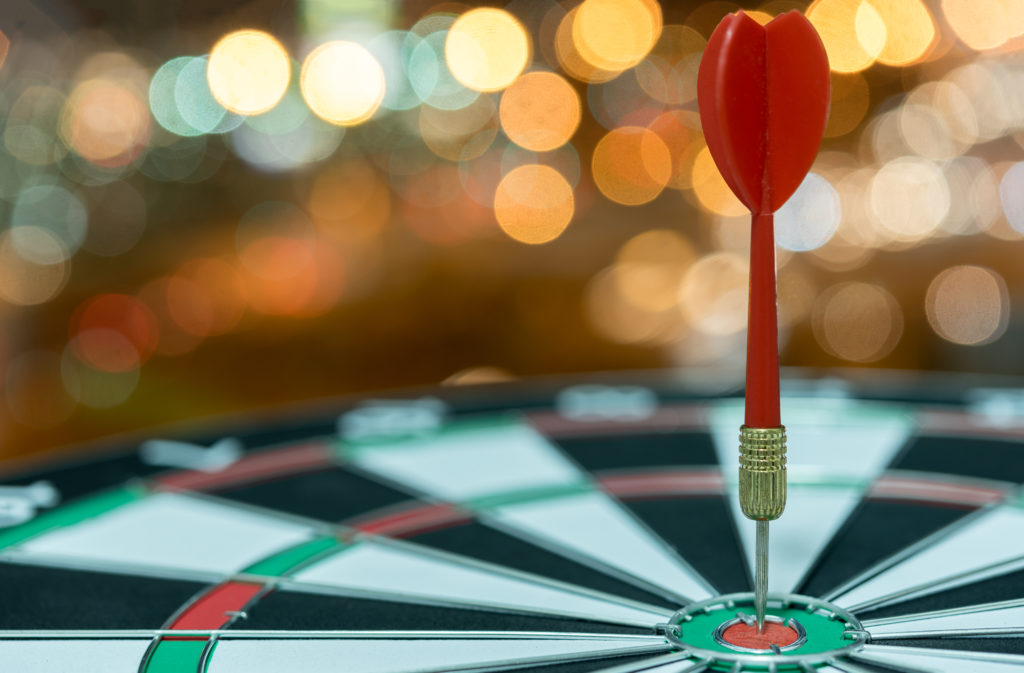
Darts is a classic pub game that has been around for centuries. While it may look simple, there are some key techniques and strategies that can help a beginner become a skilled dart thrower. This comprehensive guide covers everything you need to know to start playing darts today.
Choosing and Setting Up Equipment
The first step in learning how to play darts is making sure you have the proper equipment. The main pieces you’ll need include:
- Dartboard – Regulation bristle boards have thin wires dividing sections into 20 numbered slots. You’ll also see an inner and outer bullseye.
- Darts – These come in various weights and designs. Heavier darts around 22-26 grams are best for beginners.
- Oche (throw line) – Most games use a toe line 7 ft 9.25 inches from the dartboard. Tape a line on the floor to mark your throwing spot.
- Scoreboard – Use a chalkboard or dry erase board to keep score. There are also electronic boards available.
Set your dartboard up on a wall at regulation height – with the bullseye 5 ft 8 in from the floor. Make sure there is adequate space to stand at the oche line and throw. Install adequate lighting so you can see the board clearly.
Learning the Basic Rules
Now that you’re set up, it’s time to learn the basics of game play. There are tons of dart games, but here are some of the most common ones:
| Game | Objectives | Scoring |
|---|---|---|
| 301 | Reduce score from 301 to 0. Double in, double out. | Standard point values. Bullseye is 50. |
| Cricket | Hit numbers 15-20 and bullseye 3x to close. | Earn points by closing numbers. |
| Around the Clock | Hit numbers 1-20 in order. | Standard point values. |
| Killer | Eliminate opponents’ 3 lives. | Doubles eliminate 1 life. |
These are just a few examples of classic dart games. Be sure to agree on the rules and scoring before starting a match.
Perfecting Your Throwing Technique
Proper throwing technique is critical for accuracy and consistency. Here are some key tips for beginners:
- Stance – Stand with feet shoulder-width apart, perpendicular to the toe line. Dominant foot should be slightly ahead of the other.
- Grip – Hold the dart between thumb and first two fingers. Keep a relaxed grip to allow for wrist motion.
- Arm position – Draw throwing arm back to about shoulder height. Elbow should be level with shoulder.
- Release – Swiftly push arm forward, flicking wrist upon release. Let dart come off fingers smoothly.
- Follow through – Keep arm extended briefly after release. Don’t drop it immediately.
- Stance consistency – Throw each dart from the exact same stance position and routine.
Practice the motions slowly at first. Over time increase speed while maintaining proper technique. Strive for a smooth, controlled throw every time.
Aiming and Improving Accuracy
Being able to consistently hit your target takes practice. Here are some tips:
-Aim slightly above your intended target since darts tend to drop. Adjust angles for different target heights.
- Focus on the section you want to hit rather than the dart or your hand. Visualize the dart hitting the spot.
- Use the rhombus pattern to group darts tightly in one section. Arrange darts in a diamond shape.
- Play games like Around the Clock to improve accuracy on different numbers.
- Drills like throwing at the triples ring help tighten your grouping.
- Step back from the oche to challenge yourself as accuracy improves.
With regular practice, your darts will start clustering ever closer together as your skills improve over time.
Strategies for Winning Games
Once you have the basics down, you can start employing some tactics to help win games:
- Be aggressive hitting doubles in 01 games to finish quickly. Aim for triple 20 to start.
- In Cricket, close the 20 segment first since it’s the highest value. Control the board.
- Vary your targets – don’t keep throwing at the same spot. Spread darts around.
- Take your time and don’t rush difficult throws. Stop to refocus if necessary.
- Study your opponents’ strengths and weaknesses. Exploit their trouble spots.
- Finish hard – go for the double when you have a chance to win instead of playing it safe.
Staying calm, focused, and strategic will help improve your chances of winning tight games.
Getting Involved Competitively
Once you have developed your skills, you may want to join a league or play competitively. Here are some great ways to take your dart skills to the next level:
- Join a recreational or competitive league at a local bar or pool hall. Many host weekly matches.
- Enter amateur tournaments offered by local bars and darting organizations.
- Check for regional or state championships that attract top players to compete.
- For the ultimate competition, try qualifying for the PDC World Championship or World Masters events.
Playing leagues and tournaments is a great way to challenge yourself and meet other dart enthusiasts. Match experience will quickly improve your abilities.
All in all, with the proper practice and technique, anyone can become skilled at throwing darts. Follow these tips to steadily improve your accuracy, strategy, and competitive abilities. Over time, with dedication to quality practice, you can become a truly great dart player. The bullseye awaits – now get throwing!
